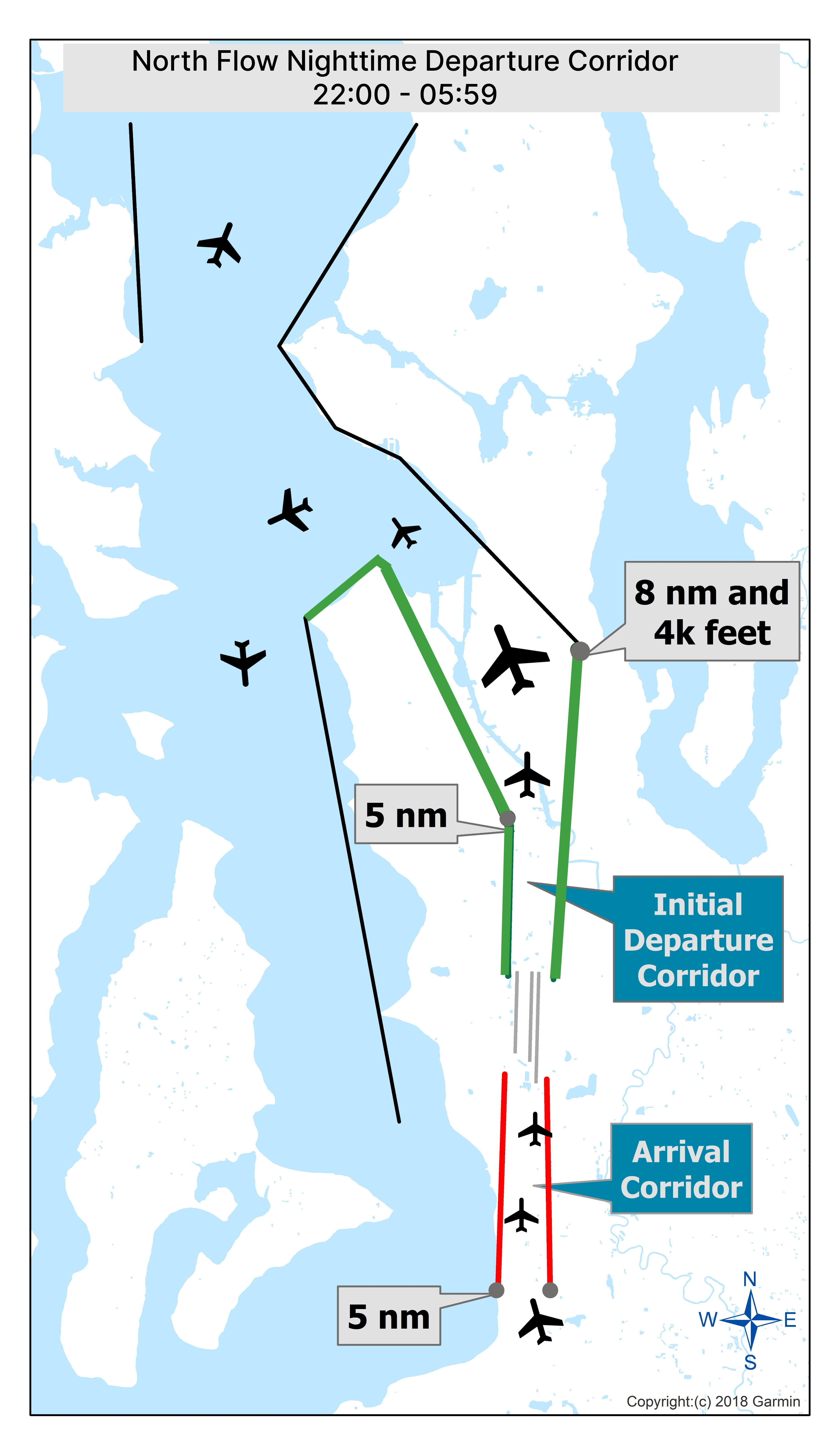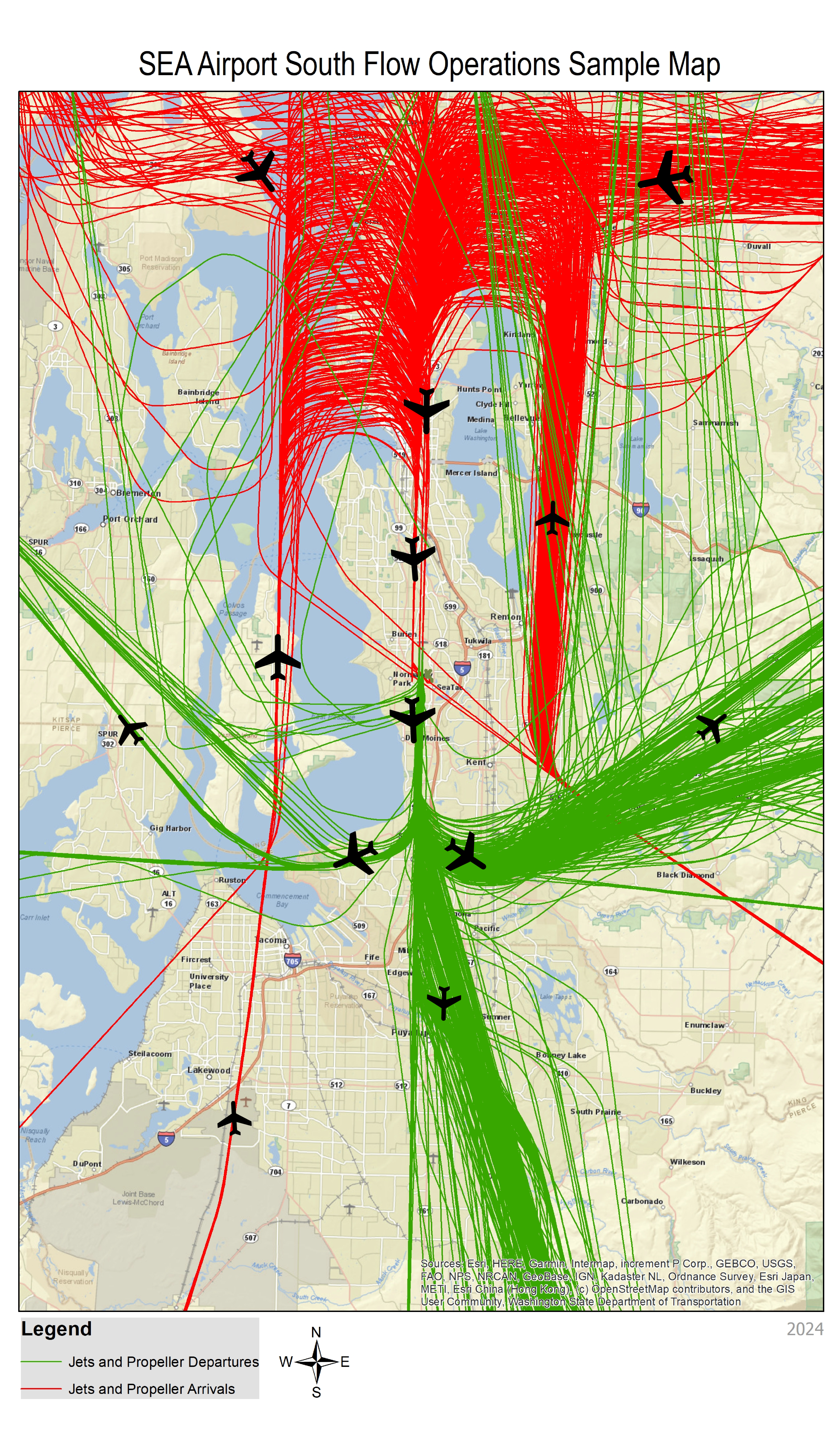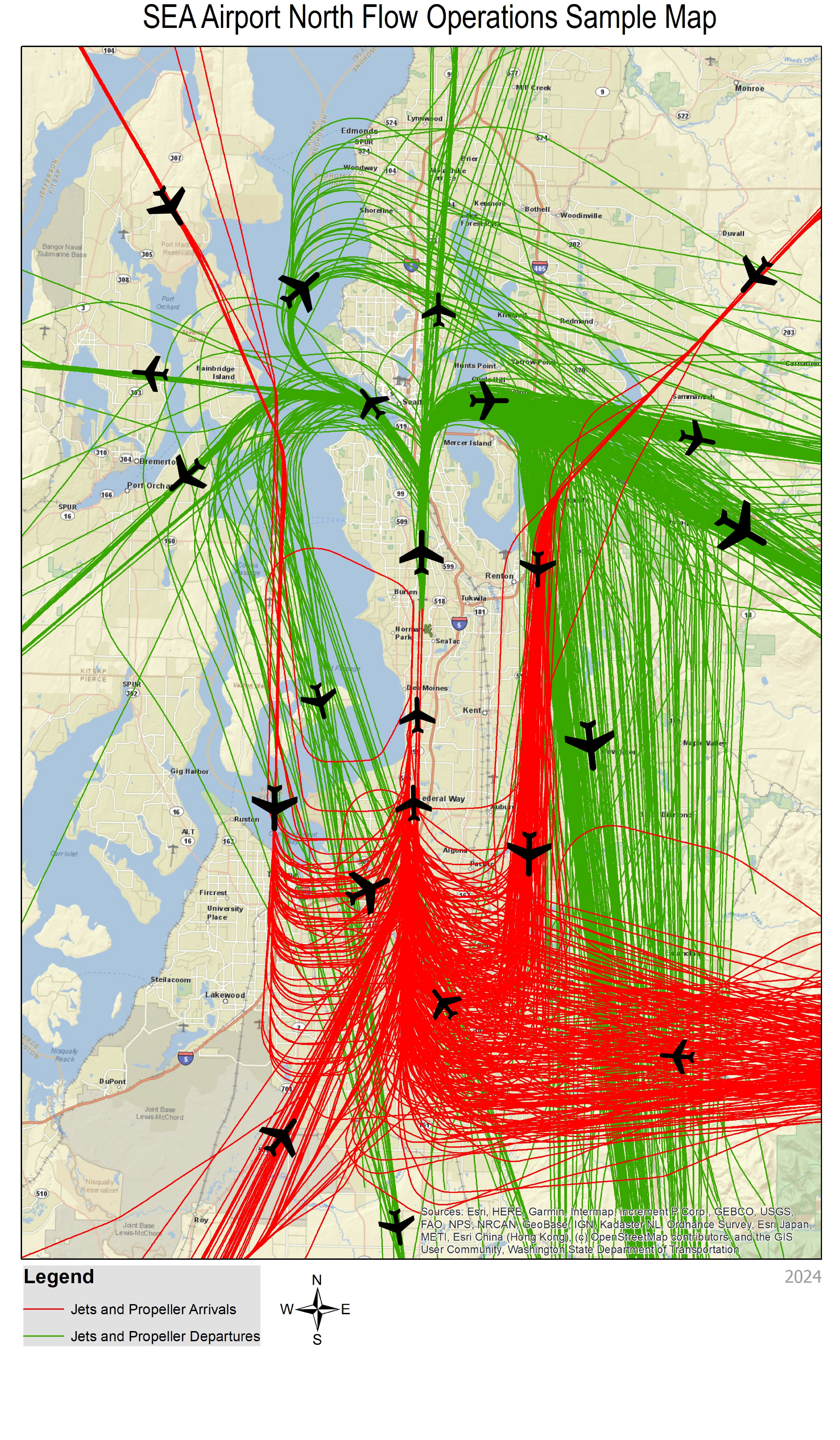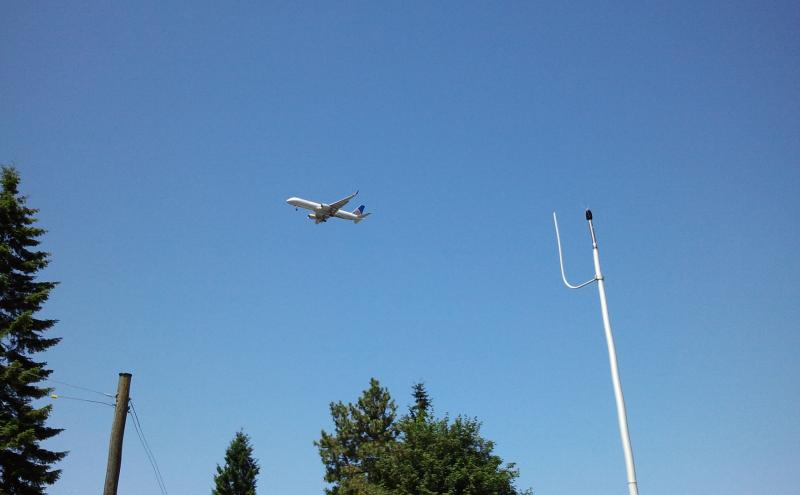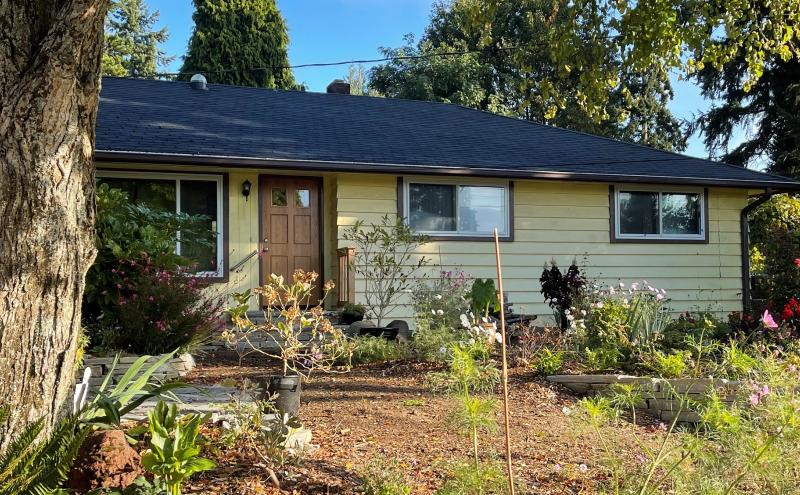Noise abatement flight procedures for jet aircraft are specific flight headings and altitudes designed to minimize noise over surrounding communities. The FAA, in cooperation with the SEA Airport and local communities, established the procedures to take advantage of existing geographical and compatible land use conditions wherever possible.
Although the FAA has sole authority over aircraft in flight, the SEA has taken the lead responsibility for monitoring and reporting air traffic activities in regard to noise abatement procedures. This information is used to track trends and identify problem areas. The FAA can direct aircraft to deviate from the noise abatement procedures for a variety of reasons, including weather, traffic safety, and aircraft performance. Propeller aircraft, being smaller and slower, cannot fly within the noise abatement corridors with jet aircraft and are allowed to deviate from the jet noise abatement flight procedures.
Whether an aircraft departs to the north (north flow) or the south (south flow) depends on wind conditions. Aircraft depart heading into the wind. In the Puget Sound region, winds tend to flow out of the south during cloudy, overcast days necessitating departures to the south. During clear weather, winds tend to flow out of the north, necessitating departures to the north.

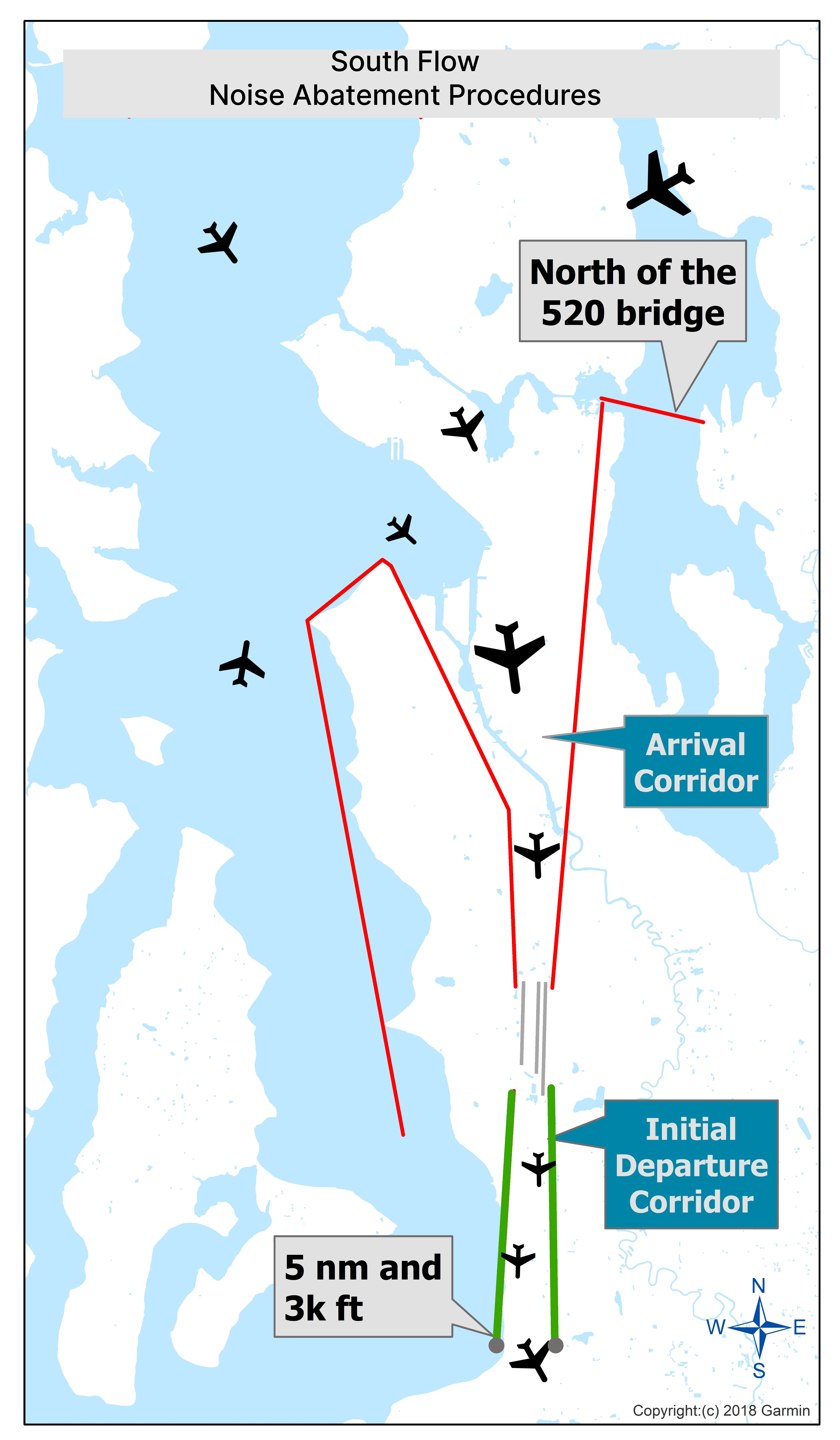
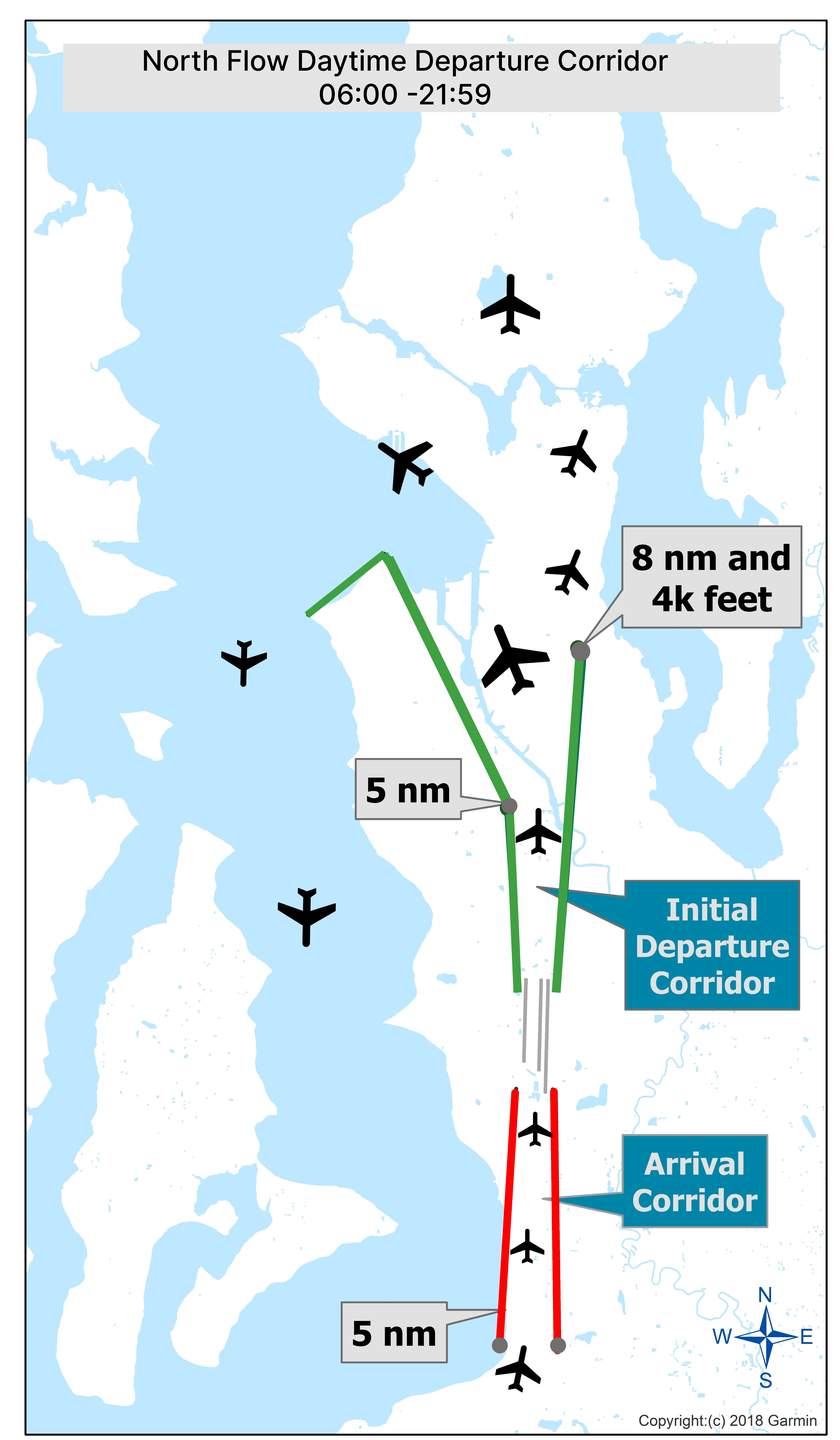 Arriving jet aircraft execute final turns before entering the narrow 5 nautical mile (nm) corridor extending from the runways.
Arriving jet aircraft execute final turns before entering the narrow 5 nautical mile (nm) corridor extending from the runways.